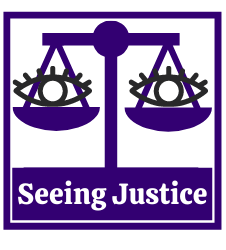Max Gluckman’s Reasonable Man
In law, the concept of “the reasonable person” is used to evaluate an individual’s actions. A “reasonable police officer” is used to assess whether or not an officer was justified in using force. But what does it mean to be reasonable?
Patrick G. Watson, PhD
There’s a paper that gets passed around our research group fairly often by an anthropologist named Max Gluckman – The Reasonable Man in Barotse Law. Barotseland is a kingdom in South Central Africa, and Gluckman did some of his anthropological field work there, studying courts and judges.
One of the stories he told was of a woman who had been accused of adultery, and the judge who was trying her. Her accuser used evidence that the woman joined a man in a hotel room in the middle of the afternoon for a brief period, an hour or two, to support the claim against her, and the judge found her not guilty because every reasonable man knows adultery does not take place during the day.
Our perhaps naïve judge brings attention to a pervasive concept in the Anglo-American legal tradition, the legal fictitious “reasonable person”. When someone has allegedly committed a crime and uses something like a self-defense justification, their actions are compared to a “reasonable person”.
The Reasonable Officer
This is extended to police officers as well. Our criminal code says that a police officer can use whatever force is necessary to do their jobs, so long as the force is “reasonable”. Reasonable usually means a police officer needs to believe that someone may seriously injure or kill either the officer or another person if they are to use lethal force.
They’re also allowed to respond to force with force to bring people into compliance, and their force must be proportionate to the force they’re experiencing. And they don’t have to be right. The police can have “reasonable” but mistaken belief a person was armed and threatening, and that would give the police legal cover if they shot and killed that person.
Policing in Practice
In 2020, a series of violent incidents occurred in which the public questioned the actions of the police, and the officers involved were deemed reasonable: Regis Korchinski-Paquet fell to her death from her balcony while Toronto Police were attending to her; Ejaz Choudry was shot and killed by a Peel Regional Police officer who was entering his residence from his balcony; D’Andre Campbell was also shot and killed by a Peel Region officer in his back yard; Fred Penner was killed by a Niagara Regional Police officer on his driveway; Jason Peterson was shot and killed by a Hamilton Police officer as he left a variety store; and Leslie Hegedus was killed by an OPP officer after he got in an argument with a grocery store clerk over wearing a mask to protect from COVID-19.
The disconnect between public and official ideas about reasonable officers is concerning. Policing is a deeply democratic institution. The people have to give consent to being policed for the police to be perceived as legitimate. It’s up to the people to decide if the police have acted reasonably or not, and a failure to respond to public demands for police accountability will result in a loss of police legitimacy.
Max Gluckman’s judge was probably a little naïve about what people do in hotel rooms in the middle of the afternoon. We cannot afford to be naïve or unaware of how police oversight functions. I hope this study brings attention to the problems of policing and police oversight so we, as a society, can come to some accord on police reforms.


Hi, this is a comment.
To get started with moderating, editing, and deleting comments, please visit the Comments screen in the dashboard.
Commenter avatars come from Gravatar.